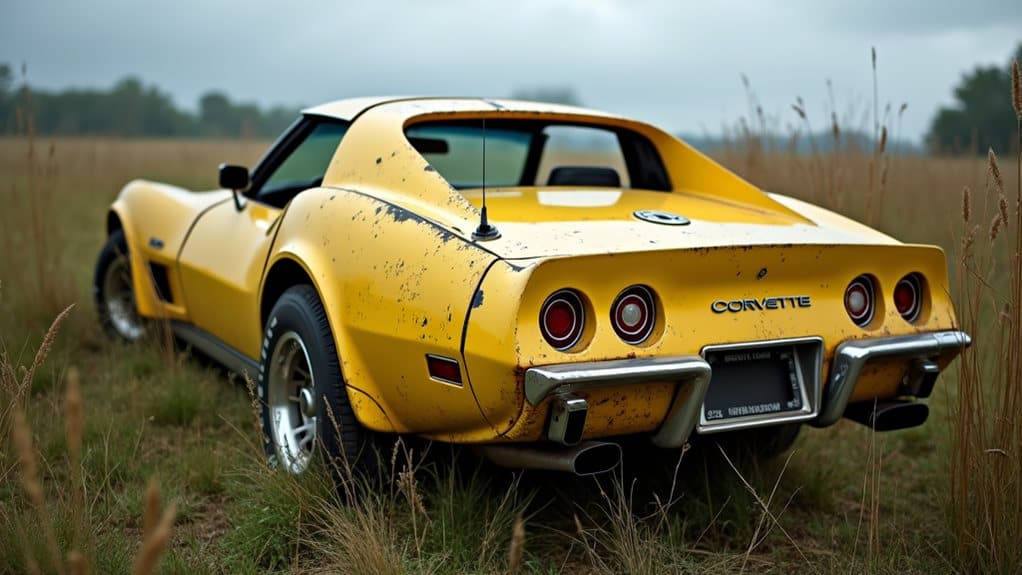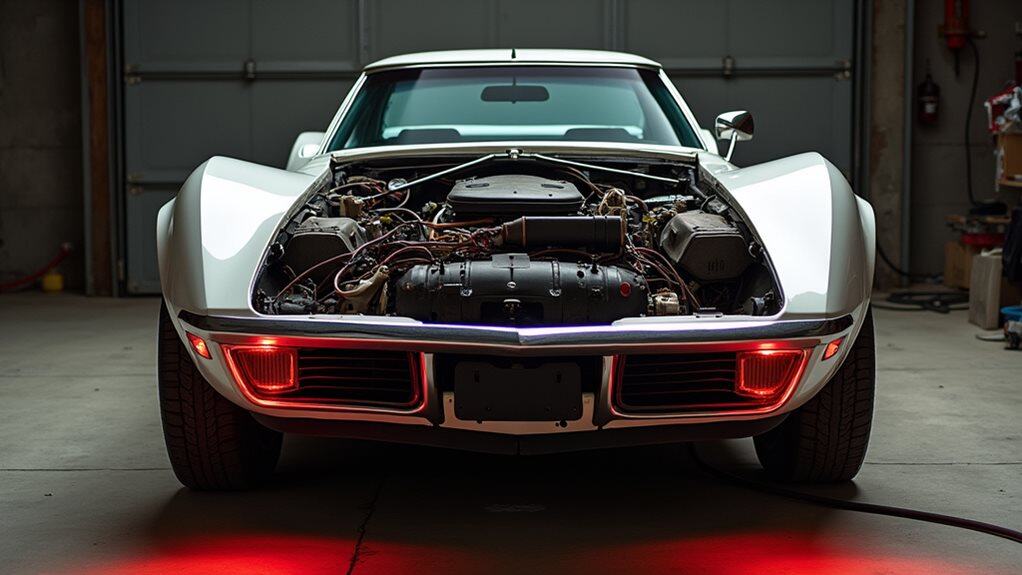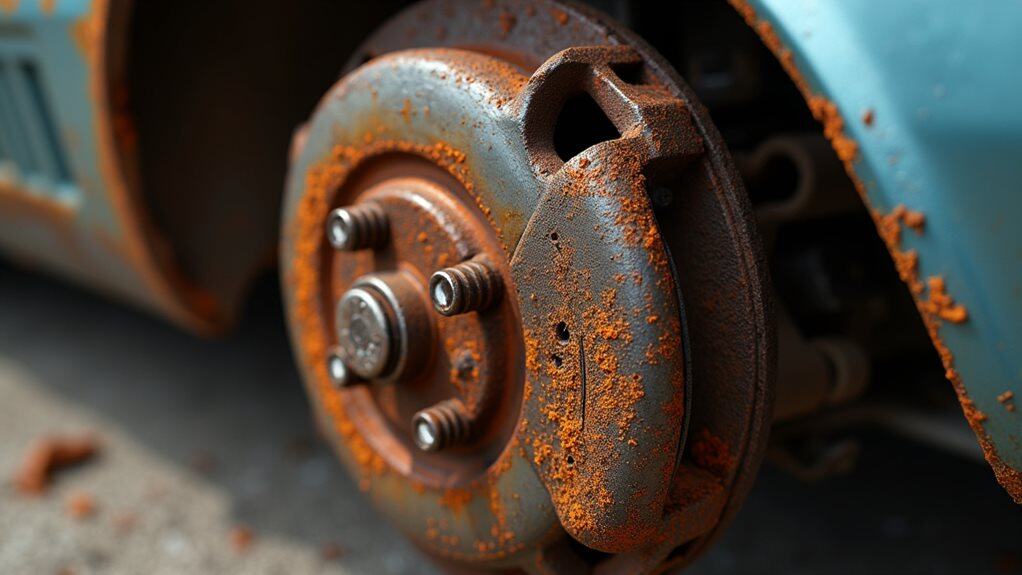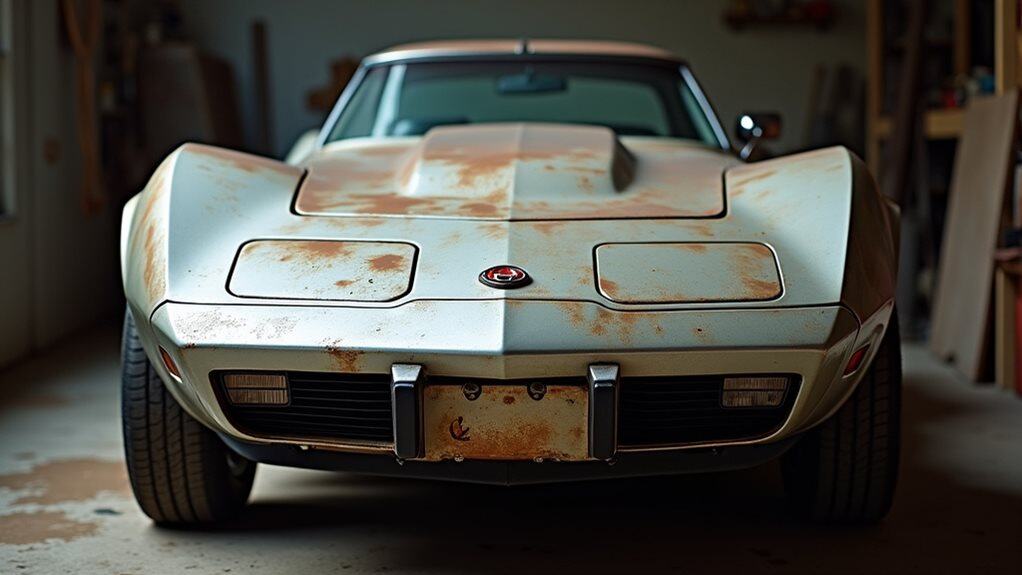You should avoid 1975-1977 C3 Corvettes due to notorious dash circuit board failures and electrical malfunctions that cause frequent AC compressor short cycling. The 1980 model year features an unreliable 305 V8 engine, while early 1968-1972 models suffer from poor assembly quality and rattling issues. The 1982’s Cross-Fire Injection system proves notoriously unreliable, and the new 700-R4 transmission breaks down under stress. Late 1970s models experience transmission leaks, poor gas mileage, and brake system corrosion that compromises safety, with additional details covering specific failure patterns below.
Quick Tips
- Avoid 1975-1977 models due to frequent dash circuit board failures, electrical malfunctions, and AC compressor short cycling issues.
- Skip 1980 Corvettes featuring underpowered and unreliable 305 V8 engines that deliver poor performance and dependability.
- Early 1968-1972 models suffer from significant assembly quality problems, rattling issues, and cruise control transducer failures.
- 1982 Cross-Fire Injection system proves highly unreliable, while new 700-R4 transmissions are weak and breakdown-prone.
- Late 1970s models experience frequent automatic transmission leaks, shifting problems, and exceptionally poor fuel economy ratings.
The Most Problematic C3 Corvette Model Years

Several specific model years within the C3 Corvette generation stand out as particularly troublesome for owners and potential buyers.
You’ll want to avoid 1975-1977 models due to notorious dash circuit board failures and electrical malfunctions. Additionally, these models may experience issues related to frequent short cycling of the AC compressor due to poor electrical connections.
The 1980 model year presents underpowered engine options, especially the unreliable 305 V8, while early 1968-1972 models suffer from assembly quality issues and rattling problems. These problematic years also commonly experience cruise control failures due to bad transducer boxes that can affect speedometer functionality. Low refrigerant levels can exacerbate these issues, leading to further complications in AC performance.
Engine and Transmission Failures That Plagued Specific Years
Beyond the electrical problems and build quality concerns that define the most troublesome C3 years, mechanical failures in the engine and transmission systems created even more serious ownership challenges. You’ll find 1982’s Cross-Fire Injection system particularly unreliable, while the new 700-R4 transmission proved weak under stress. Additionally, these issues can exacerbate severe engine damage, leading to costly repairs and potential breakdowns. Late 1970s models suffered frequent automatic transmission leaks and shifting problems. The 1977 model faced additional criticism for delivering exceptionally poor gas mileage, compounding the ownership costs beyond just repair expenses.
Electrical System Breakdowns and Lighting Malfunctions

Beyond engine and transmission troubles, you’ll encounter persistent electrical system failures that can leave your C3 Corvette stranded or unsafe to drive.
The most frequent problems you’ll face include taillight and turn signal circuits that fail without warning, dashboard instruments that provide inaccurate readings or stop working entirely, and wiring assemblies that deteriorate over decades of use.
These electrical malfunctions don’t just affect convenience features—they compromise essential safety systems like brake lights and turn signals, making certain C3 model years particularly problematic for daily driving or even occasional use. Regular inspection of battery connections is essential to prevent unexpected electrical failures that could exacerbate these issues.
Taillight and Turn Signal Failures
One of the most frustrating electrical problems C3 Corvette owners face involves taillight and turn signal failures that can leave you stranded or create dangerous driving conditions.
Bad ground connections cause the majority of these issues, while faulty wiring assemblies and burnt bulbs also contribute.
Late C3 models from the 1970s experience these problems most frequently.
Dashboard Instrument Malfunctions
Dashboard instrument malfunctions plague C3 Corvette owners just as frequently as exterior lighting problems, creating dangerous situations where you can’t monitor your engine’s essential signs or see your gauges at night.
Circuit boards in tachometers and speedometers fail after twenty years due to heat damage, causing erratic readings or complete needle failures requiring replacement.
Degraded Wiring Harness Problems
While dashboard instrument failures create monitoring challenges, degraded wiring assemblies represent an even more pervasive electrical nightmare that can completely disable your C3 Corvette’s essential systems.
Oil leaks cause conduits to become gummed and brittle, while heat damage creates melted spots.
You’ll experience intermittent lighting failures, starter problems, and blown fuses requiring complete conduit replacement.
Brake System Corrosion and Safety Concerns

When you’re considering a C3 Corvette purchase, you’ll need to pay serious attention to brake system corrosion, particularly if you’re looking at 1971 models.
The brake pedal lever and braking wheel on these cars suffer from severe corrosion that directly compromises your ability to stop safely, while brake fluid contamination with increased copper levels indicates ongoing metal deterioration throughout the hydraulic system.
You’ll also encounter corroded brake calipers, steel brake lines, and aluminum pistons that show rust stains even on fluid-contact surfaces, creating multiple failure points that can lead to brake fluid leaks and catastrophic brake system failure. Regular fluid checks are essential to ensure the integrity of the brake system and prevent these issues from escalating.
1971 Brake Corrosion Issues
Among the most serious concerns affecting C3 Corvettes, brake system corrosion stands out as a critical safety issue that can change your classic sports car into a dangerous liability.
The 1971 model year particularly suffers from severe rust affecting brake pedals and wheels, considerably impairing performance and creating substantial safety risks for drivers.
Fluid Leaks and Degradation
Brake corrosion represents just one aspect of a broader fluid system crisis that plagues C3 Corvettes throughout their production run.
You’ll encounter transmission fluid leaks from shift shaft seals, particularly in Turbo 350 automatics from 1968-1981.
Pan gasket failures compound these issues, while brake fluid degradation accelerates internal corrosion.
Age-related seal deterioration creates multiple leak points, demanding immediate attention.
Fuel Delivery Issues and Poor Efficiency Problems
Although C3 Corvettes represent classic American muscle, their fuel delivery systems present significant challenges that can leave you stranded or burning through gas at an alarming rate.
You’ll face mechanical fuel pump failures, clogged filters, and pressure imbalances ranging from insufficient 2-3 psi to flooding-prone 7+ psi levels that compromise performance and efficiency.
Common Component Wear and Age-Related Failures

When decades pass, even the most durable automotive components succumb to the unyielding march of time, and C3 Corvettes face a particularly challenging array of age-related failures that can compromise both safety and functionality.
You’ll encounter deteriorating plastic parts, malfunctioning factory burglar alarms, and leaking T-top roof seals that cause water damage throughout your vehicle’s interior compartments.
Wrapping Up
You’ll want to carefully research any C3 Corvette before purchasing, as certain model years present significant mechanical challenges. Focus your attention on documented engine problems, transmission failures, and electrical system malfunctions when evaluating potential purchases. Don’t overlook brake system corrosion, which poses serious safety risks, or fuel delivery issues that affect performance. While these classic sports cars offer tremendous appeal, you’ll save money and frustration by avoiding the most problematic years entirely.

